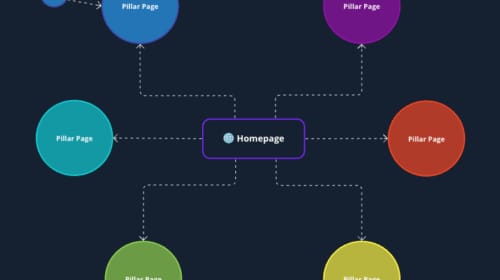A strong content plan provides your brand with a clear roadmap for creating content that resonates with your target audience while helping achieve business objectives. It not only includes a content strategy that aligns with your relevant internal stakeholders, but also considers details such as the right content formats, frequency of publication, platforms to be used, and the metrics to measure success. A well-defined, and regularly reviewed content plan ensures that your brand’s content marketing efforts are consistent, purposeful, and effective on the road ahead.
Of course, we know that putting such a plan together is no easy feat. But whether you’re starting from scratch or refining an existing content plan for better results, here are five questions to ask yourself (and your team):
#1 Who is your target audience?
Knowing your target audience is critical when it comes to creating a successful content plan. Clearly identify and segment the primary and secondary audiences from age, gender, and location, before diving deeper into their interests, motivations, and platforms they frequent. The more you know about where they live and what makes them tick, the better you’ll be able to engage them.
To enhance this process, consider tools such as Google Analytics or social listening tools like Hootsuite and Sprout Social to help you gain a deeper understanding of whom you’re speaking to.
#2 Why would your content be important to your target audience?
Once you have identified your target audience, you need to figure out why your content is important to them. You should aim to create content that is relatable to your audience, addressing their pain points, and maybe even solving their problems.
Through social listening, you can find out the types of content your target audience is currently consuming or engaging with the most, and how you might be able to create content that can fill any gaps within the market. With this line of thinking, you can then create content that is both engaging and valuable to them.
A great example is the annual Spotify Wrapped Playlists created to provide Spotify users with detailed information about their listening habits, made available to them at the end of every year. Users have the option to share their wrapped playlists on their social media platforms — a key element that sparks the same trend on social media every year since its 2016.
#3 How will your content differentiate your brand from its competitors?
Creating unique and differentiated content is key to standing out in today’s crowded online space. Analyse your competition and identify what they are doing well, and where you can offer something unique.
When building a content plan, consider your brand’s unique value proposition and leverage that to create content that differentiates you from your competition. This could be through a unique brand voice, a different format, or a fresh perspective on a topic. Take a look at McDonald’s “Menu Hacks” campaign, which addressed their target audience’s need to satisfy all their cravings in a single meal.
#4 How can your brand own its content authentically?
Authenticity is essential for brand recall when it comes to creating content that resonates with your audience. You need to create content that aligns with your brand values and showcases your brand personality so your audience will associate the created content with your brand in the long run. Consider how you can infuse brand personality into your content, whether it’s through humour, storytelling, or a unique tone of voice. A good way to ensure content authenticity would be to keep the “why and “how” of your brand in mind when creating any form of content.
Ben & Jerry’s does a marvellous job aligning its Corporate Social Responsibility initiatives and content with its branding. While everyone knows Ben & Jerry’s sells ice cream, their mission is to use their business to make the world a better place. This means supporting social and economic justice for historically marginalised communities, which explains why the brand openly supports movements like Juneteenth and Defund the Police.
#5 Does this content plan allow flexibility and adaptability after kicking off?
Just like developments around the globe, the online space is constantly evolving. So, your content plan must allow for flexibility and adaptability for your team to pivot the content executions whenever necessary. Having a clearly defined content strategy and well-thought-out content calendar provides a clear overview of upcoming content as well as how it may be shifted around when trendjacking opportunities arise or related breaking news occurs. Take a look at how a simple tweet from Oreo garnered thousands of likes and retweets by capitalising on the power outage during the 2016 Super Bowl.
Creating a successful content plan requires careful consideration and analysis of your target audience, competitors’ content, and what your brand stands for. These five questions are the simple but effective first step to building a content plan that resonates with your audience, differentiates you from your competition, and showcases your brand’s unique value proposition.
For more Content Marketing tips and other marketing trends to look out for in 2023, download a copy of TEAM LEWIS’ Upgrade to Great: Marketing in 2023 guide.
Need help with your next Content Plan? Check out our Content marketing service, or get in touch with us here.



